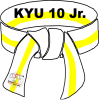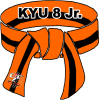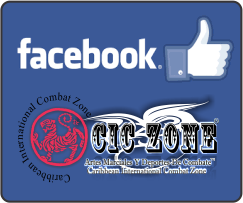Fresh dog food is a type of pet food that is made from whole ingredients, cooked and packaged to preserve the nutrients and flavor. It's typically made in small batches and has a shorter shelf life than traditional kibble. Fresh dog food can come in various forms, including pre-made meals, raw ingredients, and DIY meal kits. These meals are designed to provide dogs with a balanced and nutritious diet that meets their nutritional needs.
The benefits of fresh dog food are numerous. For one, it's easier to digest, reducing the risk of digestive issues. Fresh food also promotes a shinier, healthier coat and can even help reduce allergy symptoms. Additionally, fresh food supports a stronger immune system and provides more energy and vitality. Overall, fresh dog food is a great option for dog owners who want to provide their pets with the best possible nutrition.
When buying fresh dog food, there are several things to consider. First, look for whole, named ingredients like chicken, sweet potatoes, and carrots. Ensure that the food is nutritionally balanced and meets your dog's needs. Check how the food is preserved - is it refrigerated or frozen? Consider the convenience of the food - is it easy to serve and store? Finally, think about the cost - fresh dog food can be more expensive than traditional kibble.
There are several types of fresh dog food available, including raw food, cooked food, and vegetarian/vegan food. Raw food is uncooked and mimics a dog's natural diet, while cooked food is easier to digest. Vegetarian/vegan food is plant-based and a great option for dogs with food sensitivities.
Transitioning your dog to fresh food should be done gradually to prevent digestive upset. Start by mixing a small amount of fresh food with their current food and gradually increase the proportion over time. Monitor your dog's progress and adjust the transition schedule as needed.
If you're looking to buy dog fresh food online in Delhi NCR, India, consider Puppiezo. Puppiezo sells online wet fresh dog food that is made with whole ingredients and is nutritionally balanced. Their food is convenient and easy to serve, and they offer a variety of flavors and sizes to suit your dog's needs.
In summary, fresh wet dog food is a nutritious and healthy option for dogs. It's easier to digest, promotes a healthy coat, and supports a strong immune system. When buying fresh wet dog food, consider the ingredients, nutritional balance, preservation methods, convenience, and cost. Puppiezo is a great option for dog owners in Delhi NCR, India, who want to provide their pets with the best possible nutrition....
Sign Up
Your Martial Arts Social Media helps you connect and share with the people in your life.
Shopping
jeetwin
by Ciaraugh
jeetwin
Jeetwin: Leading Online Casino in Bangladesh
Jeetwin is a prominent online casino site in Bangladesh. It offers a wide range of gaming options and excellent customer service. This platform is popular among Bangladeshi players for its user-friendly interface and exciting promotions. Here's a quick overview of what Jeetwin offers:
Feature Details
Founded 2017
Games Offered Slots, Live Casino, Sports
Payment Methods bKash, Rocket, Bank Transfer
Support 24/7 Live Chat, Email
Jeetwin Casino Highlights
Wide Range of Games
Jeetwin provides an extensive selection of games. Players can enjoy slots, table games, and live casino options. Popular slot games include titles from top providers like Microgaming and NetEnt. The live casino section offers games like blackjack, roulette, and baccarat, hosted by professional dealers.
Convenient Payment Methods
Jeetwin Bangladesh supports various payment methods. Players can deposit and withdraw using bKash, Rocket, and bank transfers. This ensures smooth and secure transactions, making it easy for players to manage their funds.
Attractive Promotions
Jeetwin offers numerous promotions to enhance the gaming experience. New players can benefit from welcome bonuses. Regular players enjoy reload bonuses, cashback offers, and free spins. These promotions add extra value and excitement to the gaming sessions.
Reliable Customer Support
Jeetwin casino ensures that players receive prompt assistance. The site offers 24/7 customer support via live chat and email. The support team is responsive and knowledgeable, helping players resolve any issues quickly.
Why Choose Jeetwin BD?
Jeetwin is a trusted choice for online casino enthusiasts in Bangladesh. The site is licensed and regulated, ensuring fair play and security. Its diverse game library, convenient payment options, and excellent customer support make it a top choice for players in the region.
In conclusion, Jeetwin is a comprehensive online casino site catering to the needs of Bangladeshi players. With its impressive game selection, secure payment methods, and attractive promotions, it stands out as a leading platform in the online gaming industry....
The next ultra-rare Diablo 4 item has been uncovered | MMOEXP
One post sharing those findings read: "He has done different methods of Diablo 4 gold testing, power levelled new characters to 60s, started solo from there and recorded the items drops – most of the better items dropped near the start of levelling despite the clear speed being much slower at lower levels, and after he transferred all his items to his other alts, those items started dropping again for that character.
A second ultra-rare Unique item has been uncovered by a lucky Diablo 4 player.
As reported on the Diablo 4 subreddit and then picked up on by Wowhead, a Necromancer player in China got incredibly lucky by uncovering one of the six Unique items in the game. This second ultra-rare item is a two-handed sword called The Grandfather, and it looks suitably ferocious for a weapon of such renown.
Grandfather dropped from r/diablo4
The Grandfather has an astounding 2,740 damage, dealt out at approximately one hit per second, and there's a lovely 84% bonus to your critical strike damage. You'll also gain a killer +72 points to buy Diablo IV gold all attributes when Grandfather is equipped, and there's also a meaty 3,526 bonus points to the wielder's maximum health....
Shih Tzu Puppy Price: A Comprehensive Guide to Price, Health, and Happiness
The Shih Tzu, a friendly and outgoing dog breed, has captured the hearts of many dog lovers worldwide. Originating from Tibet, this small dog breed was bred to companion royal families, and their friendly nature has made them a popular choice as pets. If you're considering bringing a Shih Tzu puppy into your family, here's everything you need to know about Shih Tzu dog price, care, and more.
Shih Tzu Price in India
The Shih Tzu dog price in India varies depending on several factors, such as location, breeder reputation, and bloodline. On average, the Shih Tzu price in India ranges from ₹30,000 to ₹40,000 onwards. However, if you're looking for a show-quality Shih Tzu puppy, the price can go up to ₹2 lakh or more it depends.
Shih Tzu Puppy Price in India
Shih Tzu puppy prices in India are relatively affordable compared to other breeds. Depending on the breeder and bloodline, you can expect to pay between ₹36,000 onwards for a Shih Tzu puppy. Visit here [ https://puppiezo.com/product/white-shih-tzu/ ]
Buy or Adopt Shih Tzu?
While buying a Shih Tzu puppy from a reputable breeder ensures a healthy and well-socialized pup, adopting from a shelter or rescue organization can be a rewarding experience. Many Shih Tzu in shelters are looking for a forever home, and adopting can save a life.
Shih Tzu Dog Price: Factors to Consider
When considering the Shih Tzu dog price, remember that it's not just the initial cost that matters. You'll need to factor in expenses for food, grooming, vaccinations, and healthcare, which can add up to ₹10,000 to ₹20,000 per year.
Shih Tzu Puppies: Temperament and Characteristics
Shih Tzu puppies are friendly, outgoing, and loyal companions. They are well-suited for families with children and make great pets for apartment dwellers due to their small size. Shih Tzus are also relatively low-maintenance when it comes to exercise, requiring daily walks and playtime.
Grooming and Health
Shih Tzus have a long, flowing coat that requires regular grooming to prevent matting and tangling. They are also prone to eye problems, dental issues, and respiratory problems, so regular veterinary check-ups are essential.
Training and Socialization
Shih Tzu puppies require early socialization and training to ensure they grow into well-behaved adult dogs. Positive reinforcement training and consistent boundaries are key to developing good behaviour.
In conclusion, Shih Tzu puppies make wonderful pets for those willing to provide the necessary care and attention. While the Shih Tzu price in India may vary, the joy and companionship they bring to your life are priceless. Whether you choose to buy or adopt a Shih Tzu, remember to prioritize their health, grooming, and training to ensure a happy and healthy life together. visit here [ https://puppiezo.com/product/black-shih-tzu/ ]
Welcome to Puppiezo: Your Partner in Pet Parenting!
Are you ready to bring a bundle of joy into your life? Look no further! Our pet experts are here to help you find the perfect Shih Tzu puppy to complete your family.
Healthy, Happy Puppies Guaranteed!
At Puppiezo, we prioritize the health and well-being of our puppies. Our Shih Tzu puppies for sale are:
Health checked and vaccinated
Microchipped for safe identification
Delivered with all relevant documents (breed certificates, etc.)
Supported with 15 days' worth of feed
Eligible for our premium fresh dog food range (optional)
Nourish Your Pet with Wholesome Fresh Food!
Our fresh dog food is:
Nutrition-rich and healthy
Grain-free and preservative-free
Conveniently delivered to your doorstep
Supported with feeding and transition guidelines
Get Started Today!
Visit to order our fresh dog food [ https://shop.puppiezo.com ]and embark on a journey of healthy pet parenting with Puppiezo!
Last Words
Welcome to our online platform where you can buy health-certified dogs and puppies in Delhi NCR, India. We offer a wide range of popular Dog breeds, including Poodle Dogs, Goldendoodle Dogs, Labrador Retriever, Golden Retriever, German Shepherd, Siberian Husky, Maltipoo, Maltese, Pug, Pomeranian, Chihuahua, and Beagle.
To learn more about our puppies, including prices, photos, videos, and other details, please call us at 9355082565. Our dedicated team is always available to assist you with any pet-related inquiries.
At our platform, we prioritize the health and well-being of our dogs and puppies, ensuring they receive the best care possible. We believe in transparency and provide detailed information about our puppies, including their breed, age, size, and health status.
Whether you're a seasoned dog owner or a first-time pet parent, we're here to help you find the perfect furry companion. Contact us today to learn more about our available puppies and to schedule a visit! "...
Players gather to practice prayer technique in OSRs
by JeansKeyzhu
Players gather to practice prayer technique in OSRs
The bones contained in banknotes could make the whole process easier since you could take them off (5 coins for each banknote) for each journey outside of the portal to OSRS gold your home from Phials who is located close to the portal to the house of Rimmington close to Rimmington General Store. Rimmington General Store.
The recommended inventory setup when Training Prayer:
Tablets to connect your home
Bones in the form noted and unnoted Bones filling in the remainder of the inventory
OSRS Gold to compensate for the unnoting of Phials
Step-By-Step Guide For Power Leveling Prayer:
Create your inventory
Make use of your House tablet as a teleporter
creating inventory to facilitate prayer training in OSRs
Enter the home of a person
Make sure the property has an altar with the RS gold for sale Gilded Altar, if it does, then use your not-noted bones to the Altar
placing the bone remains on an altar
Make use of your House tablet for teleportation and head to Phials to erase the bones
Continue from step 3 and repeat the process until you reach step 3.
Be aware that you may get a quicker Prayer experience by placing the bones in order on the altar, rather than having the game use all your bones that are not marked placed on your altar. But, I would not recommend that you do this because you could be buried in error....
Trending Topics
Top Bloggers

 Add New Blog
Add New Blog





















